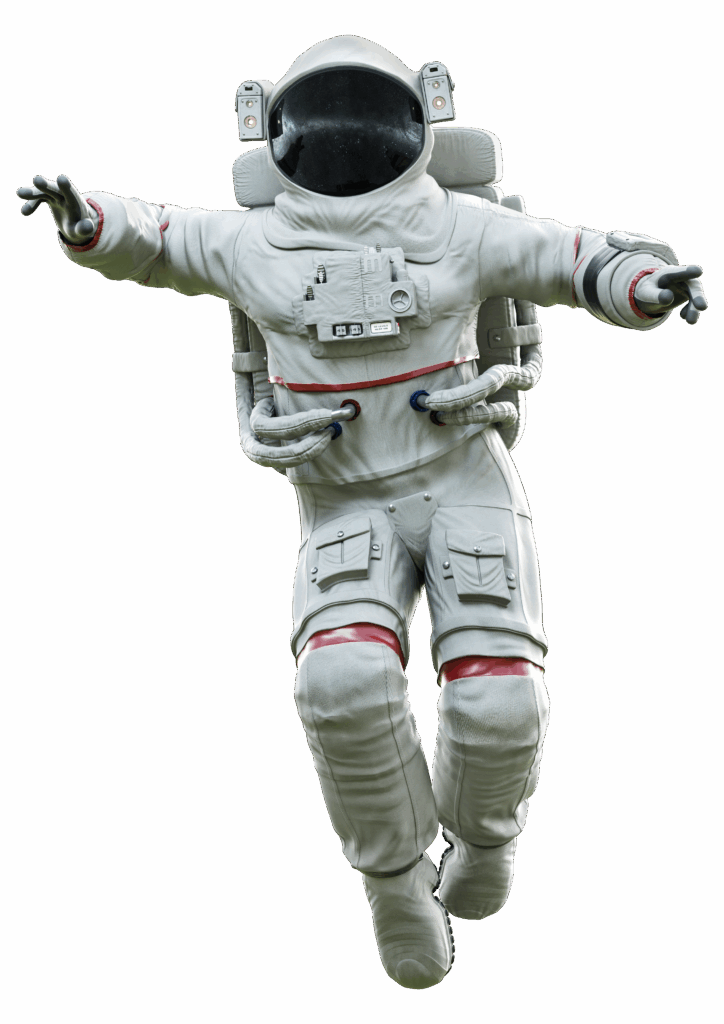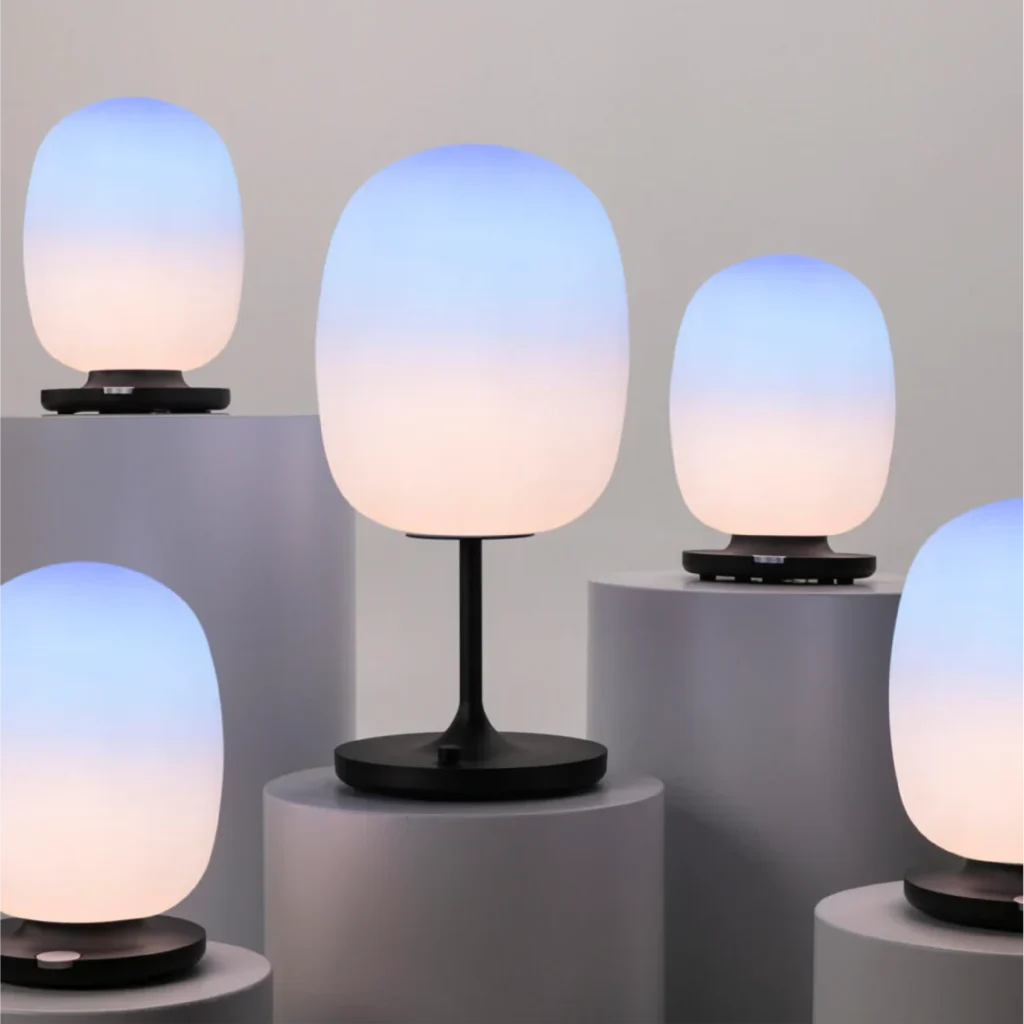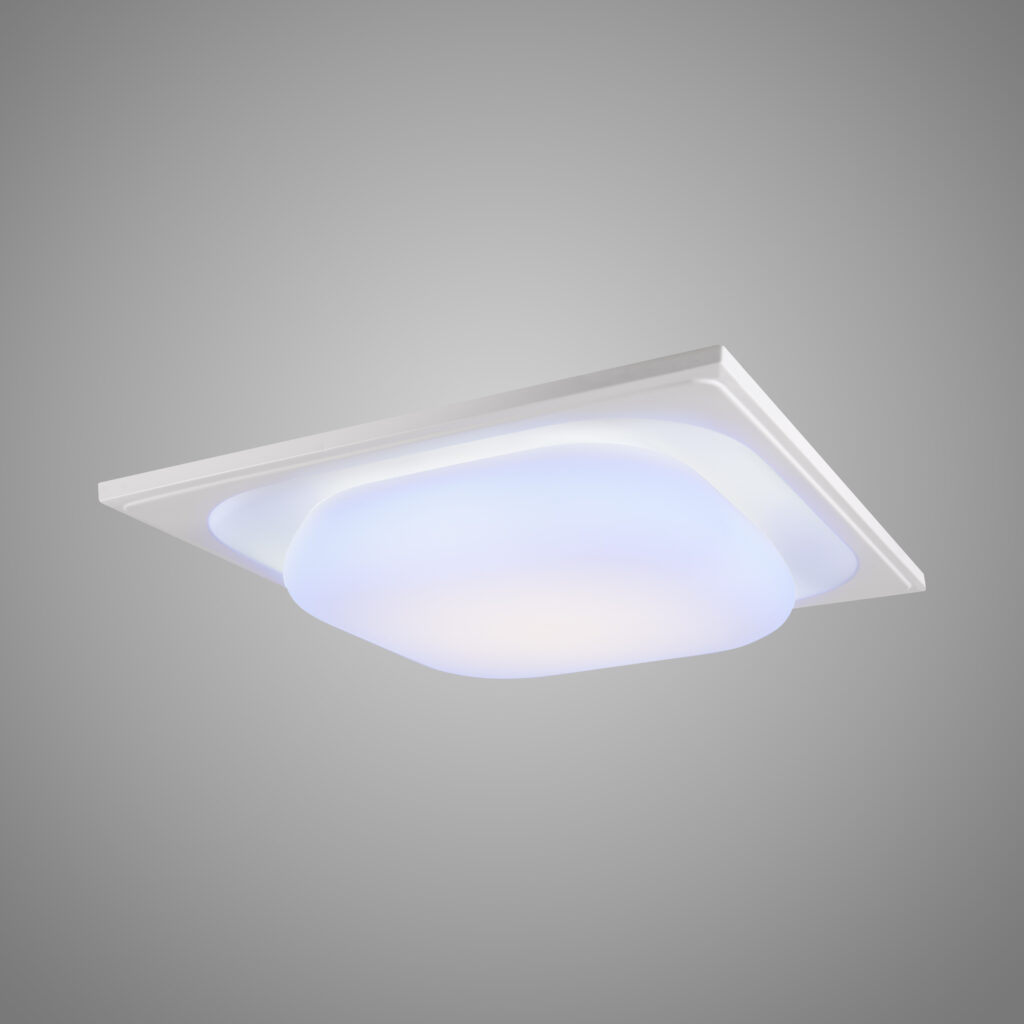Good Light, Engineered for Life: The History of BIOS Lighting and SkyView™
From Outer Space to Inside Buildings: The NASA Origins of BIOS Lighting
The story of BIOS Lighting begins not in a boardroom or startup incubator, but in SPACE.
BIOS Lighting’s origins trace back to pioneering NASA research that explored the biological effects of light on both plants and humans. In the 1990s, Neil Yorio worked at NASA’s Kennedy Space Center, leading experiments on plant growth in controlled environments. His work laid the foundation for LED lighting in space-based agriculture—offering low-energy, solid-state lighting to support plant-based life support systems during long-duration missions.
Simultaneously, NASA advisor Dr. George “Bud” Brainard discovered a third type of photoreceptor in the eye, known as the intrinsically photosensitive retinal ganglion cell (ipRGC), responsible for regulating circadian rhythms. This breakthrough helped NASA realize the importance of spectral light tuning in supporting astronaut sleep-wake cycles aboard the International Space Station (ISS).
Houston, We Have a Lighting Problem!
In the early 2000s, NASA faced a critical challenge: astronauts on the International Space Station (ISS) experienced disrupted sleep, impaired cognition, and fatigue due to the lack of a natural day-night cycle in orbit. To combat this, NASA turned to its team of engineers to solve the problem using light — not just to illuminate, but to regulate circadian rhythm and enhance human performance in extreme environments.

Lighting engineer Robert Soler joined this mission in 2007, designing the first LED lighting modules for the ISS while at Bionetics Corporation. He later co-authored the successful proposal that upgraded the entire U.S. segment of the ISS with circadian lighting—capable of shifting between alertness-enhancing and sleep-promoting light spectra. Soler’s expertise in color rendering, spectral control, and biological impact became the core of BIOS’s human lighting innovations.

Astronauts Aren’t the Only Ones Suffering From Circadian Disruption
In 2014, Yorio, Soler, and others founded BIOS Lighting to transfer NASA-derived LED advancements to Earth. BIOS would successfully focus on developing advanced, healthy lighting for horticultural and human applications. Soler’s SkyBlue® technology, which simulates natural daylight’s ‘blue-sky day’ circadian benefits, evolved into BIOS’s award-winning SkyView™ Tile—recognized at LightFair 2025 for its biologically-optimized lighting. Today, Soler and the BIOS team continue to build on NASA’s legacy, merging science and technology to create healthier indoor environments for plants and humans.
The Circadian Revolution: BIOS Lighting for Human Biology
Soler and his team developed cutting-edge LED lighting technologies that could mimic the 24-hour solar day, using specific wavelengths to help astronauts maintain their sleep-wake cycles.
After his time at NASA, Soler recognized a massive gap in the commercial lighting market. While the lighting industry had focused largely on energy efficiency and aesthetics, very little attention was paid to how artificial light affected human biology — specifically, the circadian system governed by melanopsin-sensitive retinal cells.
Soler partnered with like-minded engineers, scientists, vision biologists, and wellness experts to form BIOS Lighting. Their new mission: to bring biologically effective lighting to Earth, using the same principles honed for space missions. The result was a new class of lighting that didn’t just look good — it felt good, like how you feel on a blue-sky day when the light aligns with our body’s natural rhythms.
This research became the backbone of what would later evolve into the SkyView™ lighting system — a revolutionary human-centric lighting technology designed not only to illuminate spaces, but to optimize biological health.
Evidence-Based Design: The Dawn of the BIOS SkyBlue™ and SkyView™ Spectrum
Colored lighting products with functional claims were already common in the market when BIOS developed its first circadian technologies. It was immediately clear that the new SkyBlue™ and later SkyView™ tech was not color filtered, “mood lighting”, or anything like the gimmicky products on the market. BIOS’ approach, honed from NASA, was to use the latest research findings to create science-based circadian lighting — designed to actively support sleep, mood, alertness, and long-term health.
Improved Lighting: You Can’t Improve What You Don’t Measure
At the heart of the BIOS design was a metric called melanopic Equivalent Daylight Illuminance (m-EDI) — a way of measuring how effective light is at stimulating the circadian system. By 2020 there was a confluence of understanding by the vision research, clinical, and lighting industry leaders that people residing indoors during the day needed adequate melanopic “blue-sky” light to set and maintain their circadian rhythms for healthy living.
The Emergence of SkyBlue™ Circadian Wellness Technology
BIOS first circadian iteration, SkyBlue™ technology, was launched in 2018. The high-melanopic lighting was designed to integrate into existing architectural lighting for a wide range of building applications. The groundbreaking tech won the coveted Sapphire Award in 2019 for innovation and continues to provide an option for highly-effective melanopic light within virtually any form factor. The lighting proved to be popular in a variety of applications from sports training facilities to elder care environments.
In 2022, a multi-disciplinary team of researchers published a landmark paper laying out clear recommendations for daytime, evening, and nighttime indoor light exposures to best support physiology, sleep, and wakefulness in healthy adults. Government and industry lighting recommendations followed shortly thereafter, confirming the need for even higher levels of melanopic light indoors (>250 m-EDI).
This metric proved hard to meet with conventional lighting because while boosting light intensity or color tuning to high color temperature would concomitantly boost the melanopic component, it would also increase overall illuminance, creating an unnatural visual environment with poor color rendering and/or high glare potential.
BIOS Lighting, as the first company to optimize lighting products using melanopic ratios, was well positioned to take on that challenge.
Enter SkyView™: Spectrally Separated Light That Creates Natural Illumination
Building on the success of the first-gen SkyBlue™ technology, The SkyView™ system was BIOS Lighting’s flagship innovation — a very natural, dynamic, energy-efficient light that can change spectrum throughout the day, mimicking the natural progression of sunlight from dawn to dusk. Unlike traditional bulbs that stay a static color temperature, SkyView™ shifts seamlessly:
- Blue-enriched light in the morning to stimulate alertness and energy
- Warm amber hues in the evening to encourage melatonin production and prepare the body for rest
In addition, Soler and others suggested that the reason outdoor visual scenes were both comfortable and high in melanopic light was because natural outdoor light was a blend of blue-enriched light in the sky with warmer tones earthward.
Research supported the potential biological importance of the spatial separation but color blending. This led Soler and his BIOS team to create an improved circadian lighting approach with high angle, cooler melanopic “sky-blue” light and warmer amber light projecting downward to create an overall natural lighting look and feel. This SkyView™ Gradient Circadian Optimization™ (GCO) technology was deployed initially in table lamp forms, winning multiple design awards following release in 2021. SkyView™ ceiling tile lighting burst on the commercial lighting scene in early 2025 for use in government, commercial and medical offices, educational and sports institutions, etc.


Why SkyView™ Tile is Revolutionizing Indoor Lighting
What makes SkyView™ different than standard lighting is the unique way it provides healthy spectra:
- SkyView™ light is engineered around non-visual photoreception — targeting the melanopsin receptors in the eye that communicate directly with the brain’s suprachiasmatic nucleus (SCN), the master circadian clock
- SkyView™ light is delivered via patented color separation technology that provides highly effective, low glare, melanopic blue-enriched light in the day to stimulate alertness and can be tuned to provide warm amber hues in the evening to encourage melatonin production and prepare the body for rest
- SkyView™ systems can easily provide adequate melanopic light (>250 m-EDI) aligning with new recommendations from the scientific consensus, ANSI/IES RP-46-23, The International WELL Building Institute and UL Design Guidelines for Circadian Lighting.
- SkyView™ systems provide this vital health benefit in one-for-one standard 2’x2’ troffer ceiling light tile replacements at an industry-unique energy code compliant 0.4W/sqft.
Looking Ahead: BIOS and the Future of Biologically Effective Lighting
Looking Ahead: BIOS and the Future of Biologically Effective Lighting
From elite athletic centers to high-performance greenhouses, BIOS Lighting is a pioneer and leader in a broader shift in the lighting industry — one that prioritizes biology before bulbs.
The company continues to collaborate with academic labs, healthcare systems, indoor farms, and major research institutions to improve life on Earth using precise, biologically driven lighting. As circadian science and ag-tech innovation both accelerate, BIOS stands at the intersection of human health and agricultural sustainability — a place where light isn’t just seen, it’s felt.
References
High-Efficiency LEDs Grow Crops, Stimulate Alertness. NASA Spinoff.gov. 2018. https://spinoff.nasa.gov/Spinoff2018/cg_7.html
Brainard GC, Barger LK, Soler RR, Hanifin JP. The development of lighting countermeasures for sleep disruption and circadian misalignment during spaceflight. Current opinion in pulmonary medicine. 2016 Nov 1;22(6):535-44.
Brown TM, Brainard GC, Cajochen C, Czeisler CA, Hanifin JP, Lockley SW, Lucas RJ, Münch M, O’Hagan JB, Peirson SN, Price LL. Recommendations for daytime, evening, and nighttime indoor light exposure to best support physiology, sleep, and wakefulness in healthy adults. PLoS biology. 2022 Mar 17;20(3):e3001571.
Our SkyView™ technology represents the next generation in circadian lighting, designed to revolutionize the way we experience light.
With its patented GCO™ (Gradient Circadian Optimization) Technology, it provides the health benefits of natural sunlight indoors and sets the platinum standard in the world of circadian lighting.
SkyView™ is the only product on the market that meets the rigorous RP-46-23, GSA P100, and WELL Building recommendations, all while maintaining remarkable energy efficiency—using 70% less energy than standard LEDs.
Our SkyView™ Tile is Declare Red List Approved
Ensuring that it is both sustainable and safe for the environment. Experience the future of lighting with SkyView™, where innovation meets sustainability and well-being.
